Top 7 Running Drills for Faster Running (Form & Technique)
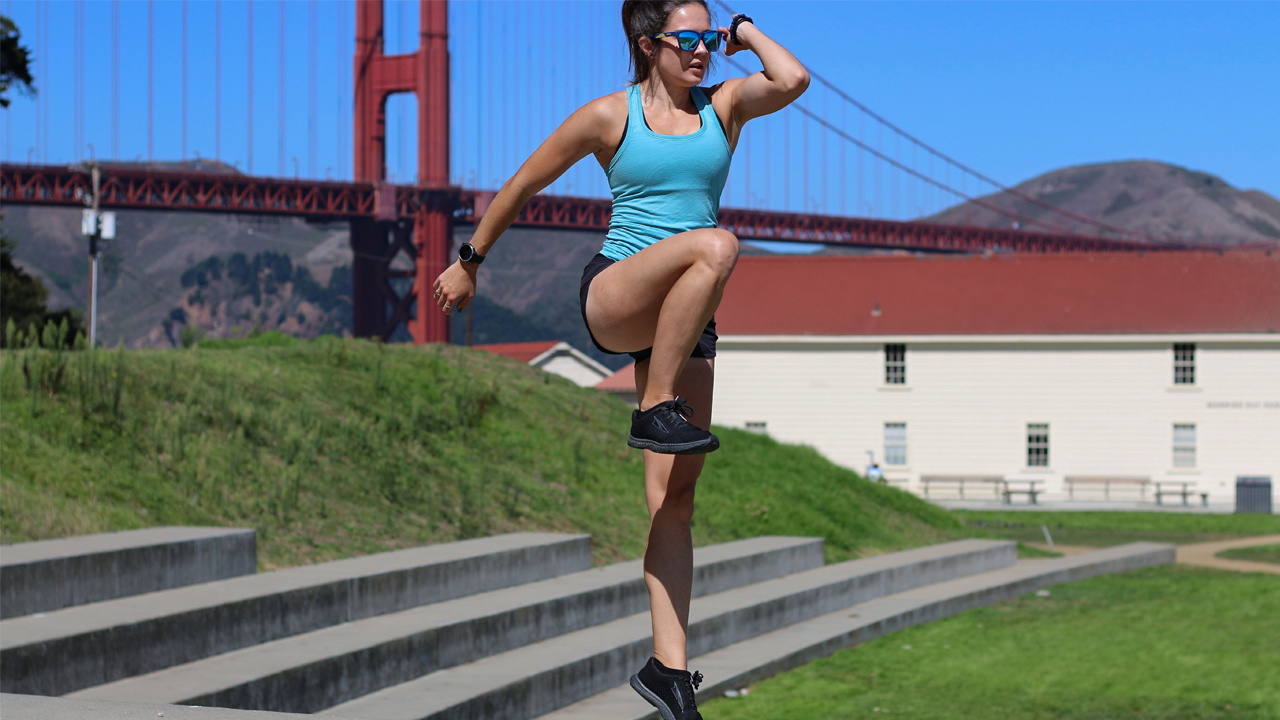
What runner doesn’t love a new PR? Speed drills can help you snag one, but sometimes taking a closer look at your running form can help, too. Adding a few running form drills into your routine can make fantastic long-term improvements.
Use these 7 head to toe running drills for faster running to make it happen. Not only will your running form improve, but you’ll be bringing some variety into your workouts. While these running technique drills might feel foreign (and some may feel silly), you won’t mind when you cruise across the finish line with a shiny new PR.
How Running Form Drills Help
Runners like to run—it makes sense. But drills can sometimes feel like homework, and that’s not what runners like. However, adding a few of these drills to your weekly running routine can help program your body for better form and technique, and those things lead to better running economy (and that means more miles and more smiles).
These drills for runners teach your body how to run properly. Your technique changes as you shift speed, and your body needs to learn to adapt and use different muscles. When it comes time to crank up the pace for your 5K PR or even a half marathon, you’ll need muscles trained and developed for pushing the pace.
7 Running Drills for Runners to Build Speed
These running drills start off with a look at your posture and building awareness of how it feels to be light in your feet. We’ll then add some movement with leg drills and rotational drills.
Put it all together and you’ll have a great start at improved movement patterns when running. With consistent practice, you’re sure to feel more comfortable, run more efficiently, and hit those speed goals.
Once you’ve spent some time on these running form drills, check out this post for three running workouts to build speed and endurance!
Posture Form Drills for A Strong Start
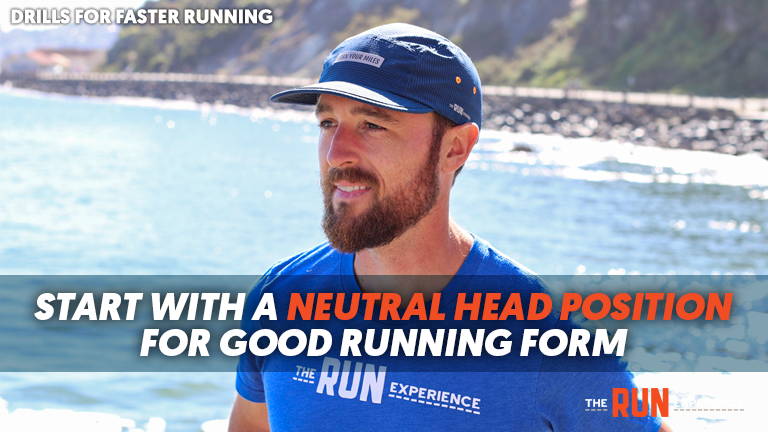
The proper running form for speed when running is a strong, supported alignment from head to toe.
Here are some cues to keep in mind:
- Stand up tall with ears, shoulders, hips, and ankles stacked evenly.
- Your head should be nice and neutral, so not tipped up or down.
- Check your chin position by creating a tripod with the thumb and middle fingers, and resting your chin on your pointer finger.
- This tripod gives individualized feedback on the proper head position for your body.
Once you have yourself standing tall with good form, get rocking! This will give you support to maintain your best running form for speed throughout a long race.
1. Heel-Toe Rocking
- Keep it subtle, and shift hips backward and forward, rocking on to your toes.
- Lead with your hips, and allow gravity to pull you forward, (but not so far forward you fall!)
- Repeat that rocking motion, allowing yourself to take a few steps forward as you feel your hips and gravity leading you in that direction.
Try a few rocks to get the feel for this drill. Use that momentum from your hips, and get hopping!
2. Hopping Drills
Ever notice how some runners look like they are bouncing along with ease? Hopping drills will put that same springiness into your running. The key is finding a balance between supporting your body and staying aligned. Don’t get too stuck and rigid though!
- Keep your core, butt, and belly held tight.
- Your shoulders, breathing, and ankles should stay nice and relaxed.
With all of that in mind, do two 30-second rounds of small hops or jumping rope, letting your heels gently kiss the ground with each hop.
Leg Technique Drills to Build Cadence
Running speed is determined by stride length as well as cadence—how many times the foot hits the ground in a given amount of time. The higher your cadence, the less ground contact time you’ll have while running. Meaning you’re less likely to plod along slowly (marathon shuffle, anyone?). With a softer impact, you’ll likely feel less beat-down and sore after a run.
A quick cadence and light footfalls come by learning to pick up your feet as quickly as possible when they hit the ground. To do that we need to practice both pulling and pushing motions—these form running drills can be a game-changer for your speed.
3. High Knees
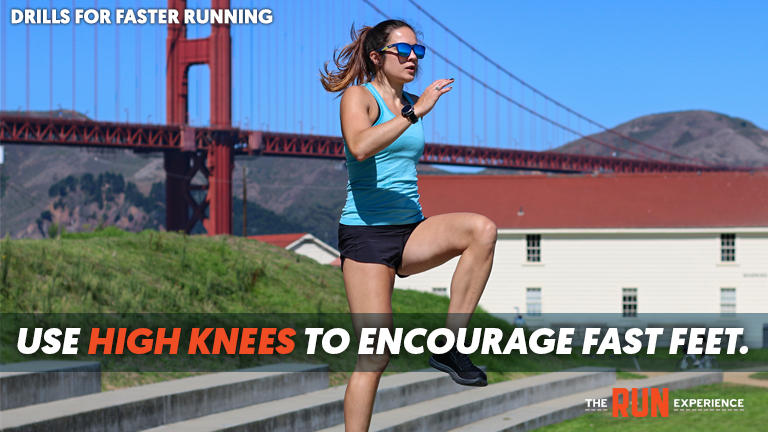
Practice picking your feet up quickly with this classic running drill for beginners.
- Start by running in place.
- Begin lifting your legs in front of you on each step.
- Lift to about 50% of full height to start.
- Work up to 100% lift where your quadriceps are parallel to the ground.
- Keep the pace quick to practice that higher cadence.
Once familiar with the form running drill, start moving forward slowly while lifting. Practice in 10-meter increments. And remember! Keep abs engaged, posture upright, and butt tight. It doesn’t take a lot of them to really feel yourself working.
4. Butt Kicks
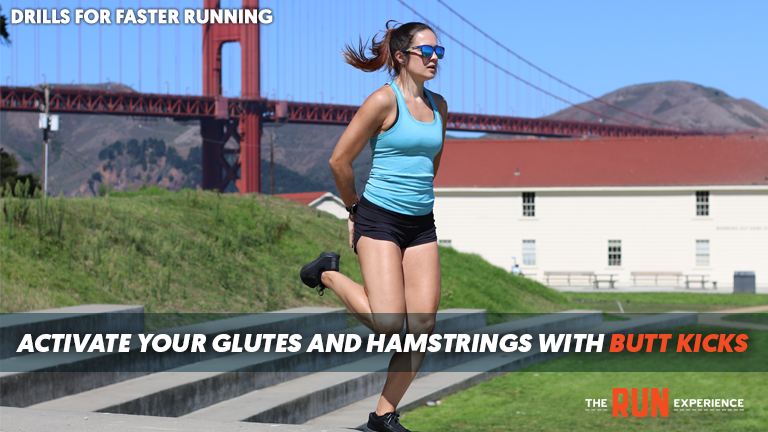
Pulling your knees up is just half of the equation in developing a higher cadence. The other half is pulling your heels up, using the backs of the legs. Recruiting your hamstrings, instead of your hip flexors, will help avoid early fatigue in your hips while out running. Plus, the hamstrings are an important part of the chain in running, so it’s helpful to practice engaging them in drills.
- Again start by running in place.
- This time you’ll lift your heel toward your butt.
- Start slowly, lifting only partially until you work up to the full range of motion.
- Like the high knee drill, start at 50% pull and work up to 100% (bonus points for actually kicking your butt).
Again work in 10-meter increments and really concentrate on pulling up from the heels.
5. Inseam Pulls
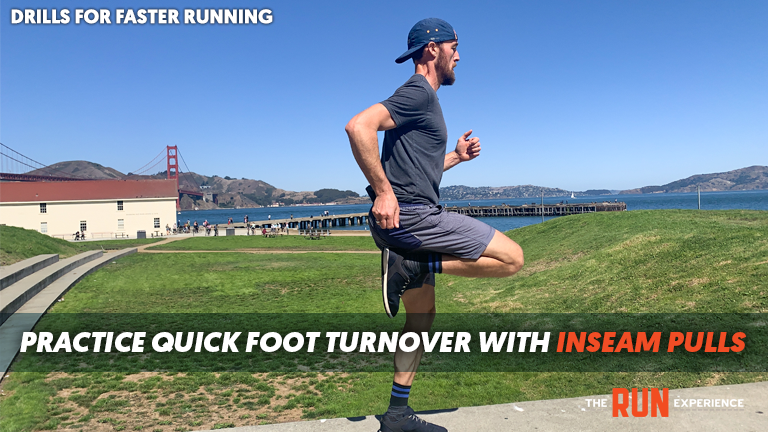
In this drill, we combine the high knee and the butt kick to pull the foot straight up along the inseam of your other leg.
- Focus on using the hips and hamstrings to draw the leg up–not just the quadriceps.
- Start by practicing while just standing, then move to jogging in place and practicing a few pulls on each leg.
- Make sure not to lean away from the supporting leg as you pull. A tight core will keep you steady.
To start, try 10 pulls per side. From there, you can mix up your pattern, eventually alternating legs on each pull. The key here is quick turnover!
Rotation Drills To Build Stability
It’s natural that as your legs drive forward, your upper body wants to counter the motion by rotating back. To stay balanced and efficient, you have to swing your arms. But with too much rotation, you actually lose some of that forward momentum to sloppy arms crossing in front of the body. It’s a matter of finding a balance between too little and too much rotation.
The next running technique drills will focus on that “just right” relationship between your upper and lower body for the right amount of stability for great running technique and efficiency.
6. Stable Arm Drill
Ah, the stable arm drill. Tough but effective! This drill will hone in on what it feels like to have too little rotation while running.
Start by running 10 to 20 meters with your arms lifted straight out in front of you, trying to keep them as stable as possible.
- Don’t allow them to swing side to side as you run. Do you feel how much effort it takes to resist that rotation?
- Notice how your cadence automatically quickens and your knees don’t come up as high.
Now try the same 10-20 meter pass but with your hands together, out in front of you.
- You’ll probably notice again that your stride shortens and your cadence increases, as you resist moving from side to side in your upper body.
For your last 10-20 meter pass, run again with your arms up, hands together in front of you, trying to create as LITTLE lateral shift as possible.
- Take note of how much tension you have to keep in your core to resist the twist.
- You’ll also suddenly appreciate how much easier it is to run with nice loose arms and relaxed shoulders.
7. Carioca
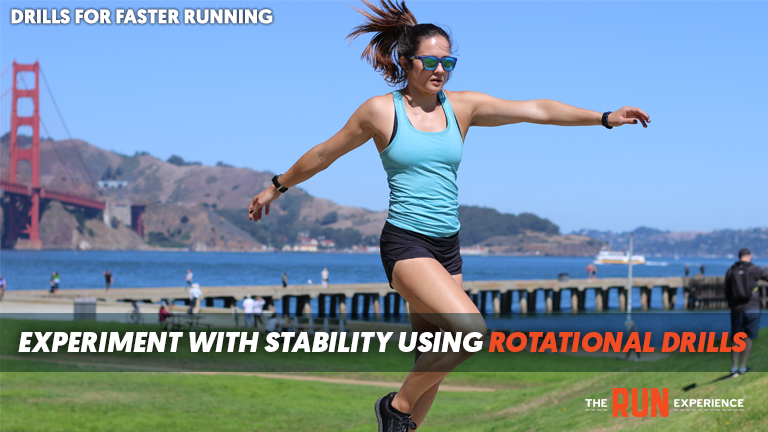
To finish, we try the opposite of that stable arm drill by adding in exaggerated rotation.
The carioca (also known as the grapevine)is another classic schoolyard drill that is actually a great running drill.
- Once again, you’ll use 10-20 meter passes to move sideways, alternating between crossing one foot in front of and behind the other.
- Try this in both directions, letting the upper body rotate to counteract the cross-over from the lower body.
Practice this one regularly to build some mobility in your spine and back, and relax your arm swing.
Put These Running Form Drills Into Practice
And that’s it! Our 7 running form drills for faster running! Try incorporating these technique drills into your training week, either as part of your dynamic warm-up before your run or even by pausing mid-run to wake up your brain and your feet on those weekend long runs.
Practice makes perfect. These running drills might feel silly at first, but no one (including you) will be laughing when you cross the finish line faster, stronger, and happier.
Access all our interactive videos, full training programs, and an active running community by downloading our mobile app!
